So...
I've been dinking around with inexpensive ways to better regulate how my rifle (a .22 QB78) dispenses co2 in order to make it more efficient, the cartridges last a bit longer, and hopefully gain some control over muzzle velocities for the duration of the shooting session. Making it hit harder wasn't the goal.
Transfer port size-reduction was first (because it came that way with a .125" ID seal), then a way of reducing hammer-bounce was introduced by placing a silicone seal (from a vape coil) over the valve poppet stem.
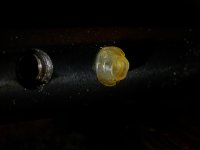
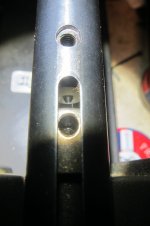
Those two combined gave 72 useful shots from a pair of cartridges (up 14 from the original number), and 40 shots from a single when it was paired with an unpierced cartridge. You can combine them any of these ways. You have to tighten the cap all the way, then loosen it to pierce the forward facing cartridge if you reverse the rear one.
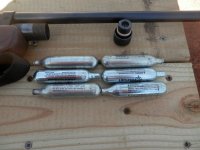
Once the restricted TP seal was replaced with one even tighter at .090" and the silicone seal was swapped for a #113 o-ring, a pair of cartridges yielded 93 useful shots (492-fps average, 716 ft/lbs total). A single cartridge yielded a surprising 55 shots, but at reduced velocity (451-fps average, 352 ft/bs total). Accuracy hasn't noticably suffered and the normal upward curve in velocities for the first few shots is no longer there. It's now a very steady slow decline. Strange...
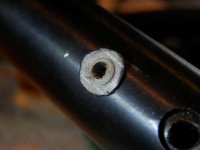
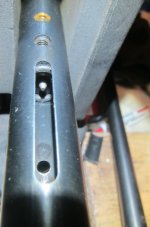
So...
If reducing the number of trips to Wal-Mart to feed your QB77, QB78, AR2078, Crosman 160 or Crosman 180 is the goal, then you might want to check it out. This set-up is currently running about two-pennies a shot, and I'd love to see how well it works for others.
I'll continue to mess with this as the weather warms.
Cheers,
J~
I've been dinking around with inexpensive ways to better regulate how my rifle (a .22 QB78) dispenses co2 in order to make it more efficient, the cartridges last a bit longer, and hopefully gain some control over muzzle velocities for the duration of the shooting session. Making it hit harder wasn't the goal.
Transfer port size-reduction was first (because it came that way with a .125" ID seal), then a way of reducing hammer-bounce was introduced by placing a silicone seal (from a vape coil) over the valve poppet stem.


Those two combined gave 72 useful shots from a pair of cartridges (up 14 from the original number), and 40 shots from a single when it was paired with an unpierced cartridge. You can combine them any of these ways. You have to tighten the cap all the way, then loosen it to pierce the forward facing cartridge if you reverse the rear one.

Once the restricted TP seal was replaced with one even tighter at .090" and the silicone seal was swapped for a #113 o-ring, a pair of cartridges yielded 93 useful shots (492-fps average, 716 ft/lbs total). A single cartridge yielded a surprising 55 shots, but at reduced velocity (451-fps average, 352 ft/bs total). Accuracy hasn't noticably suffered and the normal upward curve in velocities for the first few shots is no longer there. It's now a very steady slow decline. Strange...


So...
If reducing the number of trips to Wal-Mart to feed your QB77, QB78, AR2078, Crosman 160 or Crosman 180 is the goal, then you might want to check it out. This set-up is currently running about two-pennies a shot, and I'd love to see how well it works for others.
I'll continue to mess with this as the weather warms.
Cheers,
J~
Last edited: